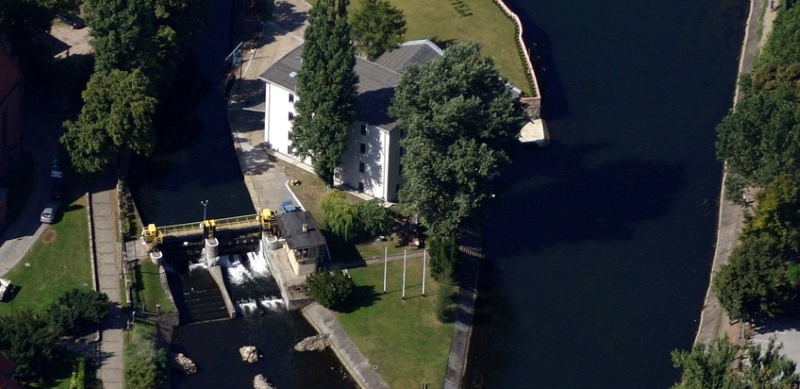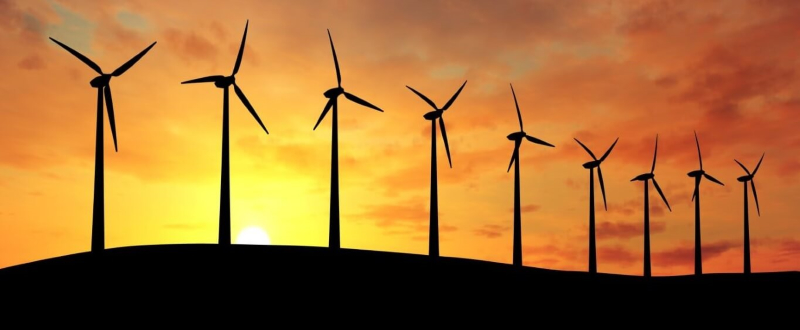Development of the RES sector is one of the Polish government’s priorities. According to Directive 2009/28/EC, EU member states should gradually increase the share of renewable energy in total energy consumption and in the transport sector. At the same time, it should be remembered that RES is not only solar panels, but also, for example, hydroelectric power plants and wind turbines. According to data from the Polish Economic Chamber of Renewable Energy, the share of renewable energy consumption in final energy consumption) r. amounted to approx. 8% in 2010. (Total gross final energy consumption was about 756 TWh).
Renewable energy sources (RES) are an alternative to traditional primary non-renewable energy carriers (fossil fuels). Their resources are replenished by natural processes, which practically allows to treat them as inexhaustible. In Polish conditions, renewable energy includes energy from direct use of solar radiation (converted to heat or electricity), wind, as well as hydrothermal and geothermal resources, hydroelectric, solid biomass, biogas and liquid biofuels.
While traditional energy sources, such as fossil fuels and oil, will one day run out, RES have inexhaustible potential. Renewable energy sources are stable and sustainable, which is their greatest advantage. There is no risk that the resources will run out in a short period of time, and this translates into security and predictability of energy supply. Some inconvenience may be the fact that it is still a branch that has not developed to its potential and requires further investment and therefore financial outlay. Given the advantages of renewable energy sources, however, investments are profitable on both a macro and micro level.
There is no official definition of small hydropower plants (SHPPs) in Poland, but usually installations with a total capacity not exceeding 5 MW fall into this category. Such a definition is partly reflected in the Law on Renewable Energy Sources (RES Law), according to which hydroelectric power plants with a capacity of up to 5 MW are entitled to receive so-called “renewable energy”. green certificates.
The European Union countries have different divisions of hydropower plants by capacity, which do not allow a clear distinction between small and large hydropower. Annually, Polish hydropower plants produce approx. 2 TWh of energy, which is approx. 16 percent. technical potential, while on average in Europe the hydropower potential is used at more than 40 percent. The division of hydroelectric power plants due to their ability to cooperate with the electric power system, we divide into:
- run-of-river power plants,
- Power plants on reservoirs with periodic flow regulation,
- power plants in a compact cascade,
- Pumped storage and pumped storage power plants.
Hydropower plants are the most intensively used source among renewable energy sources. They operate in 150 countries and in 2017 provided a total of 4060 TWh of electricity, accounting for 15.9% of the world’s total electricity production. Paraguay and Norway base their electricity market almost entirely on hydropower.

Small hydropower plants are often built on existing water stages. Electricity produced at these power plants is used to meet local needs. There are currently more than 550 SHPPs in operation with a total capacity of more than 35 MW. The largest number of Seagulls work in the northern provinces (about 110 in the area of the Olsztyn Power Plant and about. 90 in the Gdansk Power Plant area, as well as in Jeleniogórskie and Podkarpackie.
The Polish government supports renewable energy production in various ways:
- Investment incentives for renewable energy producers (color-coded certificate system),
- Energy companies involved in the marketing and sale of electricity are required by law to purchase energy from RES,
- Renewable energy producers have priority access to the transmission grid,
- Electricity from a renewable source is exempt from excise taxes,
- The grid connection fee for small installations (<5 MW) is reduced by 50%.
- Investments in clean energy can be co-financed by the Environmental Protection and Water Management Fund.
Small hydropower facilities are effective in helping to combat drought, and their importance to Poland’s power grids lies not only in the storage of energy, but primarily in the rapid delivery of energy locally to end users from small, distributed and emission-free sources built by small entrepreneurs using equipment made in Poland.
A wind power plant is a set of equipment, the most important of which is the wind turbine, commonly known as a windmill. The kinetic energy of air movement is converted in the blades of the wind turbine into mechanical energy of the rotating rotor. Transferred to the generator via gears, the wind energy is eventually transformed into electricity. The power of the current depends on the wind speed and the size of the turbine.
A home wind power plant is a way to become partially independent of the power grid. Although it won’t work everywhere, in many places in Poland it can be effective in reducing electricity bills. How does a domestic wind turbine work? The scheme is always the same, no matter what power plant you decide on. Occurring gusts of wind set the rotor blades in motion. This causes the turbine to move, which transfers the energy further to the generator. The generator, on the other hand, converts wind energy into electricity.
The construction of a wind park, like any venture, only makes sense if the installed equipment will work efficiently. In the case of wind turbines, the reason for the success or failure of an investment is mainly due to wind conditions, that is, in practice, the location of the equipment’s foundation. To get 1 MW of power, a wind turbine rotor should have a diameter of about 50 meters. Since a large conventional power plant has a capacity of up to 1 GW, i.e. 1000 MW, then its replacement would theoretically require the use of approx. 1,000 such wind generators. In fact, wind turbines operate approx. 1500-2000 hours per year, i.e. three times shorter than conventional and nuclear power plants. Thus, to produce as much electricity as one large classical power plant, it takes approx. 3,000 wind power plants with a capacity of 1 MW.
Surveys carried out in the European Union countries where wind power is most developed indicate that public support for this type of installation is more than 70% and is growing every year. The ratio is even higher in areas where many such devices are installed.

Bibliography and source texts:
https://www.extradom.pl/porady/artykul-przydomowa-elektrownia-wiatrowa-jak-dziala-i-ile-kosztuje
https://www.paih.gov.pl/sektory/odnawialne_zrodla_energii
http://portalrsi.it.kielce.pl/pl/top/rodzaje_elektrowni_wodnych_?
https://www.teraz-srodowisko.pl/aktualnosci/elektrownie-wodne-male-MEW-system-wsparcia-2020-8484.html
https://wysokienapiecie.pl/36889-energetyka-wodna-ogromne-koszty-marne-skutki-czy-rzeczywiscie/
https://pl.wikipedia.org/wiki/Elektrownia_wodna
https://kb.pl/porady/elektrownie-wiatrowe-w-polsce-informacje-lokalizacje-oplacalnosc/
https://www.instalacjebudowlane.pl/3535-33-68-elektrownie-wiatrowe–pytania-i-odpowiedzi.html
https://pl.wikipedia.org/wiki/Elektrownia_wiatrowa
https://www.edisonenergia.pl/blog/najwazniejsze-zalety-energii-odnawialnej
http://www.uwm.edu.pl/kolektory/energia-wody/mew.html
 MBF Group
MBF Group























